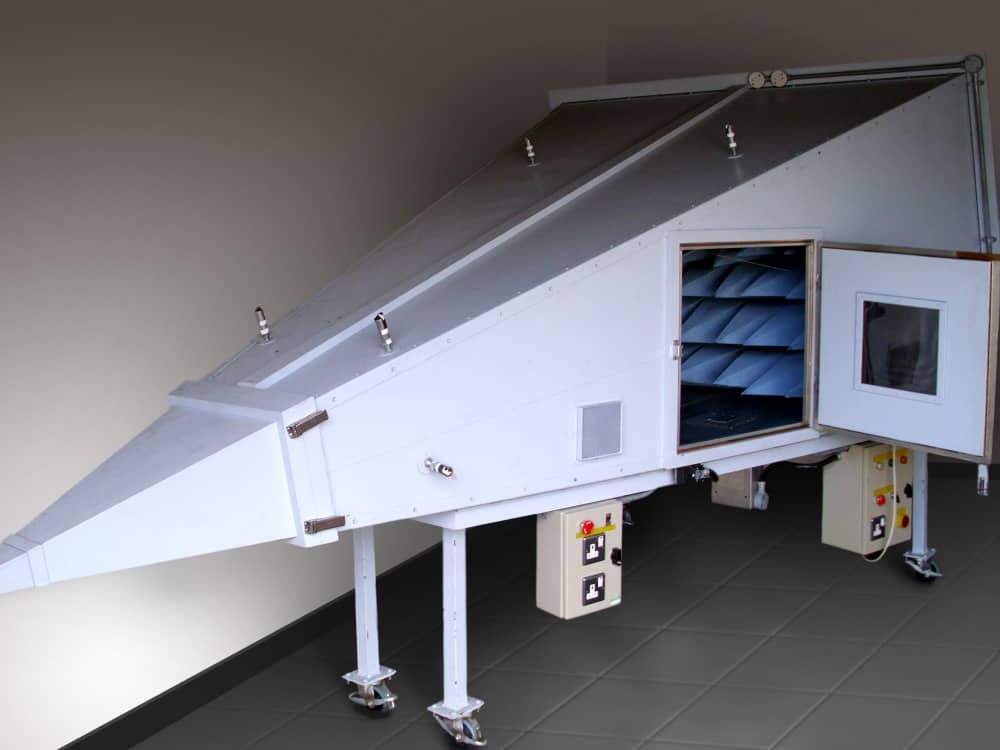Radio Equipment Directive – What You Need to Know in 2019
As electronics product designers we know that the compliance process in electronics product development can appear intricate and precarious, if rules or regulations are misinterpreted.
Now, our community has the European Union’s new Radio Equipment Directive 2014/53/EU (RED) to grapple with.
The RED was published in the Official Journal of the EU (OJEU) on 22 May 2014, entered into effect on 11 June 2014 and is applicable as of 13 June 2016. It repealed the Radio Equipment and Telecommunications Terminal Equipment Directive 1999/5/EC6. It provided for one-year transitional period, which ended on 12 June 2017 (Article 48).[1]
With a significant bearing on how manufacturers gain a CE Mark, due to changes between the two frameworks, it’s crucial to fully understand these regulatory differences to avoid time and cost overruns.
Here’s an overview of the Radio Equipment Directive – its scope, impact on product design, and what you should do next.
Regulatory necessity for new Radio Equipment Directive
Traditionally, almost all devices dependent on the radio frequency spectrum to function mainly consisted of AV equipment, PCs, and telecommunications technology.
Since 2000, regulatory compliance and conformity has come under the Radio and Telecommunications Terminal Equipment Directive (the R&TTE Directive, 1999/5/EC).
Now, the Internet of Things has ushered in an age of ultra-connectivity with millions of items connected and communicating daily; smart cars, meters, jewellery, fitness devices – even smart paper… the list seems endless.
The relentless proliferation of IoT is also widely believed to have been a contributory factor to the R&TTE Directive revisions.
RED – its aims
The driving forces behind this new regulation were improving market surveillance and raising the number of products meeting compliance requirements. The RED ensures all radio devices (or ‘apparatus’) within its remit are compatible for use in the EU.
This is done through a regulatory mandate of standard technical requirements for telecommunications apparatus; allowing approved equipment to be sold without restriction between countries in the European Economic Area (EEA).
The Radio Equipment Directive – what are the main changes?
RED – main changes include:
- No provision for Telecom Terminal Equipment (TTE); this now comes under the EMC (EMCD) or Low Voltage Directives (LVD)
- No lower limit to the radio frequency spectrum. Under the RTT&E Directive, the range covered was between 9 kHz and 3000 GHz.
- LVD safety obligations: no voltage limits for radio equipment
- No alert sign (Class 2 labelling)
- Provision for universal chargers to address wastage
- Closer regulation of the activities of Notified Bodies
- The manufacturer must inform the Notified Body of all modifications to the product that may affect compliance
- Further clarification on market surveillance guidelines
- Pure radio sound and radio TV receive-only equipment, which was excluded from Directive 1999/5/EC, falls within the scope of the RED
- Equipment operating below 9 kHz falls within the scope of the RED
- Radio-determination equipment is clearly included within the scope of the RED
RED – scope includes:
- All Radio Receivers (Broadcast TV and radio equipment included)
- Equipment capable of being connected to a public telecommunications network even if that is not its intended purpose
- Examples of equipment included within the scope of the RED:
- Cordless and mobile phones
- Terminal adapters
- Telephones
- Modems
New listings:
- Wireless Microphones; Audio PMSE up to 3 GHz
- Assistive Listening Devices including personal sound amplifiers and inductive systems up to 3 GHz
- Harmonised Standard covering the essential requirements of article 3.2 of Directive 2014/53/EU
- Global System for Mobile communications (GSM)
- Mobile Stations (MS) equipment; harmonised standard covering the essential requirements of article 3.2 of Directive 2014/53/EU[2]
Read the full list of harmonised standards: https://ec.europa.eu/growth/single-market/european-standards/harmonised-standards/red_en
Legacy products must also meet the latest RED harmonised standards. The (Electromagnetic Compatibility Directive) EMC, safety and Radio R&TTE harmonised standards will eventually be harmonised under RED.
Putting into service of radio equipment may include incorporation of radio equipment into a fixed installation. In the RED, the concept of fixed installations is not explicitly defined.
However, the RED requires in Article 3.1.b that “an adequate level of electromagnetic compatibility as set out in Directive 2014/30/EU” has to be ensured. With this, not only the relevant requirements of Annex I of the EMC Directive but also all the other regulations of the EMC Directive which apply to the EMC level are relevant. This applies, in particular, to the special requirements and procedures according to Article 19.1 and Annex I (2) of the EMCD for fixed installations.[3]
RED – scope excludes:
- Amateur radio kits
- Marine equipment
- Airborne components and products (which fall under Article 3 of regulation EC216/2008)
- Equipment for military, police and state-security
- Pure wired telecom terminal equipment does not fall within the scope of the RED
- Custom built evaluation kits destined for professionals to be used solely at research and development facilities for such purposes are explicitly excluded from the RED.
- There are currently very few RED harmonised Radio standards and the R&TTE list has disappeared.
Further amends
- Since 9 August 2018, equipment has to be labelled if there are restrictions for use.
- Development of some product standards to demonstrate compliance (November 2017)
- Updates to equipment lists that are not subject to use restriction (January 2018)
- Brexit (could change anytime – last guidance was January 2019)
- New version of RED guide for manufacturers published.
RED and the EMC Directive
We asked Anne Barr at The Compliance Map – a developer of supply chain and environmental compliance software solutions, to explain how RED affects the EMC Directive: ”the EMC requires equipment to be designed and manufactured to ensure that any electromagnetic disturbance generated does not impact the operation of radio and telecommunications equipment and that it is not impacted by such disturbance. It specifically excludes equipment covered by the Radio Equipment Directive (RED).
Therefore, the changes introduced by RED had two direct impacts on EMC:
- Telecom Terminal Equipment previously covered by the Radio and Telecommunication Terminal Equipment Directive (R&TTE) and not included in RED now falls within the EMC.
- Sound and TV receive-only equipment and radio equipment operating below 9 kHz previously excluded from the R&TTE are no longer by covered by the EMC.
However, Article 3 of RED requires radio equipment to have an adequate level of electromagnetic compatibility as set out in EMC, recognising that the essential requirements of the EMC were sufficient to cover equipment covered by RED. This effectively merges the requirements of EMC into RED.”

ByteSnap’s EMC testing chamber
Who’s affected by the Radio Equipment Directive?
- All 27 EU member states
- 3 EEA (European Economic Area) Countries EEA -EFTA states (Norway, Iceland and Liechtenstein)
- Switzerland
Impact on Product Designers
For new products the impact on product designers is minimal, as most products that fall under RED would also have fallen under R&TTE, so the testing will be required anyway.
How should electronics companies manage their responsibilities under RED?
Anne Barr advises that a compliance plan should be designed with reference to the EU RED guide for manufacturers.
“Roles and responsibilities should be assigned, and budget allocated for the following:
- ensuring that the legislative requirements are understood and that changes are monitored
- reviewing and updating existing conformity assessment procedures. The use of harmonised standards should be considered as it allows self-declaration of conformity. CENELEC and ETSI have already developed some standards.
- revising product labelling, technical documentation and declaration of conformity as appropriate
- amending risk management procedures e.g. sample testing, complaints monitoring and product recall as needed
- communicating requirements both internally and externally.”
RED Post-Brexit*…What Happens Now?
Despite talk of a return to BSI (British Standards Institute) conformance, it’s too early to speculate about a potential 2-tier compliance system for UK-manufactured devices.
Britain is in the early stages of leaving the European Union, a process which will take an estimated two years. So, as far as EU legislation – including the Radio Equipment Directive – is concerned, it’s business as usual.
Generally, in the event of a “no deal” Brexit, UK businesses would have to add an extra layer of compliance if they wish to place their goods on the EU market. Companies importing EU products to the UK which require third party testing under the New Approach Directives could continue to do so until further notice, but companies importing goods under the Mutual Rec The results of the negotiations between the UK Government and Brussels remain to be seen.
In the meantime and in terms of preparing for a “no deal” Brexit, the UK government will confirm status on any new UK product compliance markings.[4]
To find out more on European harmonised radio spectrum usage, try the EFIS tool – the European Communications Office’s Frequency Information System.
[1] https://www.cept.org/files/4940/Report%20EC%20to%20Council-Parliament%20about%20RED%20Nov%202018.pdf
[3] http://www.mgrt.gov.si/fileadmin/mgrt.gov.si/pageuploads/DNT/SP/novi_pristop/RED-radijska_oprema/RED_guide_5_junij_2018.pdf
[4] https://www.twobirds.com/en/news/articles/2018/uk/brexit-and-product-compliance-no-deal-scenario
*Since the article was first published, the United Kingdom left the European Union on December 31st 2020.
How can ByteSnap help you today?
From start-ups to blue chips, ByteSnap’s embedded systems developers are enabling companies to stay a step ahead by providing them with bespoke solutions. Maintain your competitive edge – contact us today and find out how we can optimise your product development!




